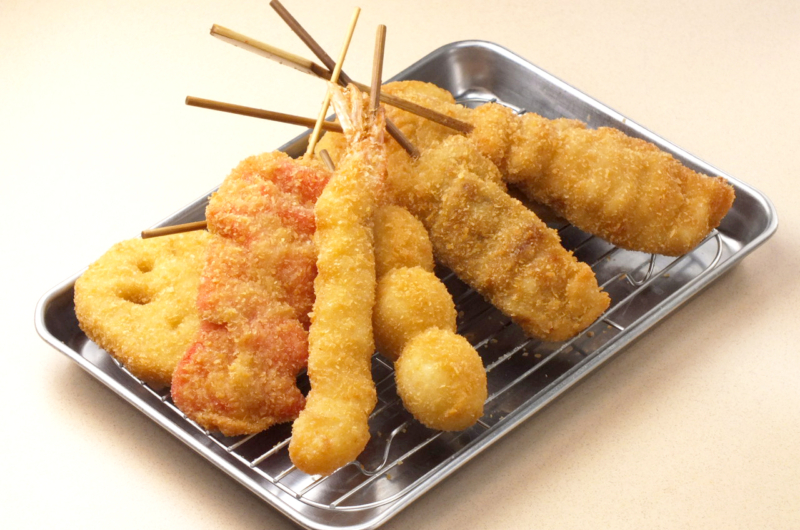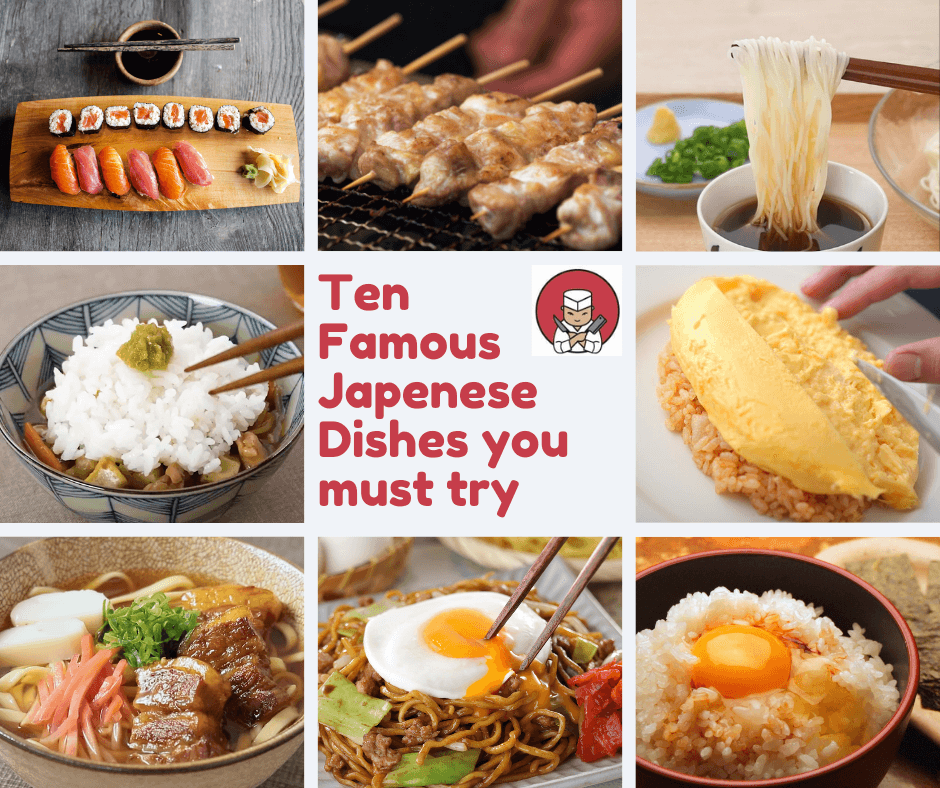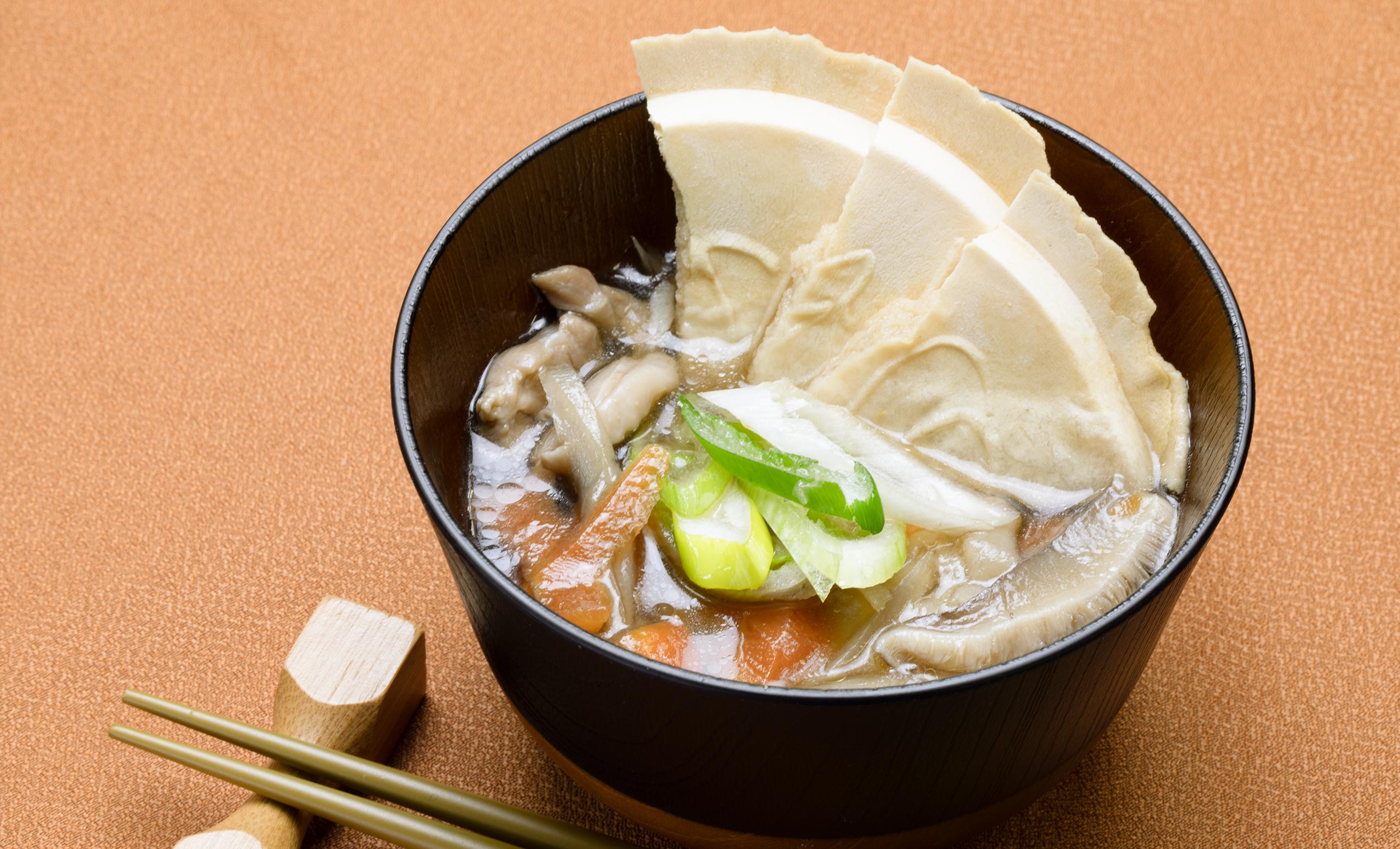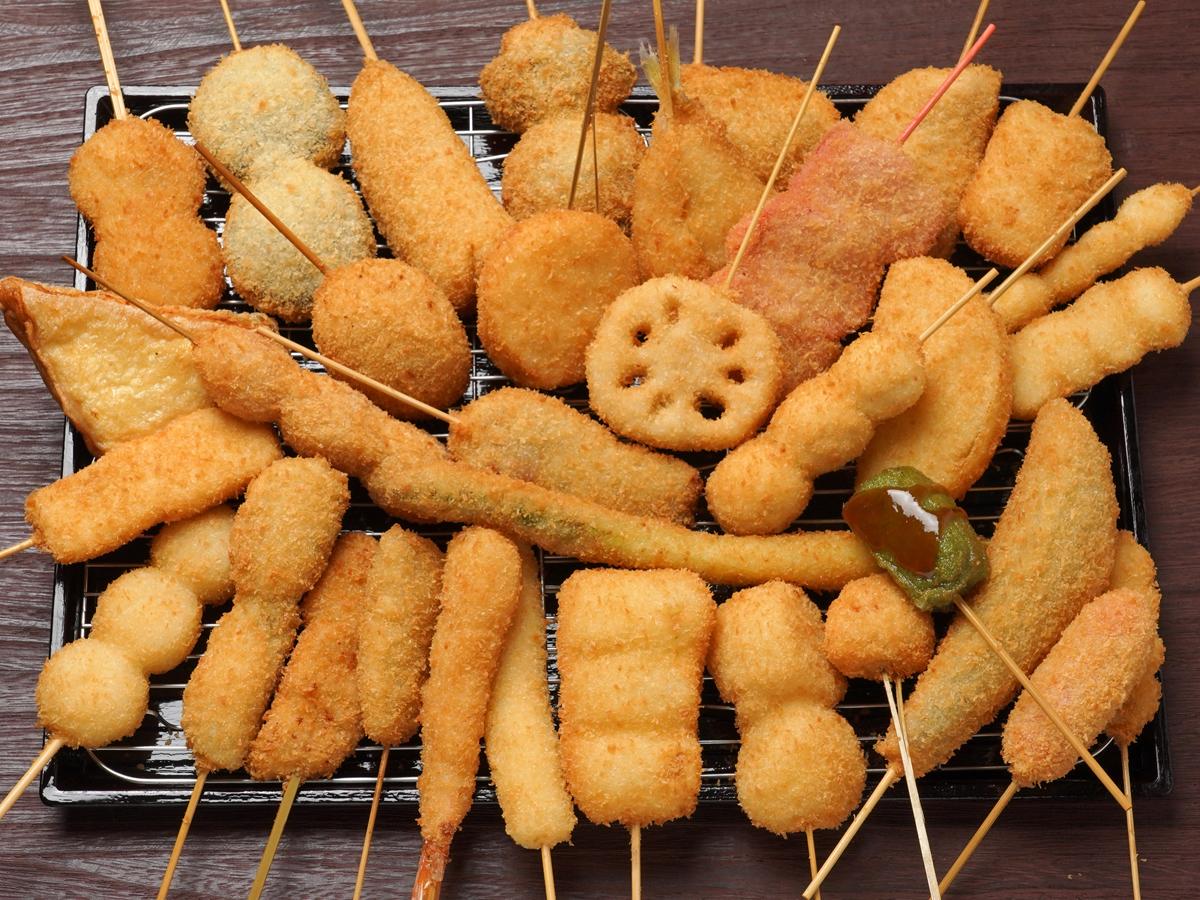
Kushiage (串揚げ) — better known as kushikatsu (串かつ) — is a popular dish consisting of meat, vegetables or seafood that are skewered, battered, and deep fried.
The deep fried skewers are typically paired with a tangy dipping sauce, and refreshing raw cabbage.
Kushikatsu is most famous in Osaka (Kansai region), but can be found throughout Japan.
In this post, we’ll take a detailed look at this delicious deep fried delicacy, including:
- Regional variations
- Brief history
- How to eat kushikatsu (etiquette)
- Popular types and ingredients
- Kushikatsu sauce
- Recipes, and more…
Let’s get started!
Regional Differences: Kansai vs Kanto vs Chubu
The terms kushiage and kushikatsu are typically used interchangeably, but can refer to slightly different foods depending on where in Japan you are. Let’s take a quick look:
Osaka / Kansai
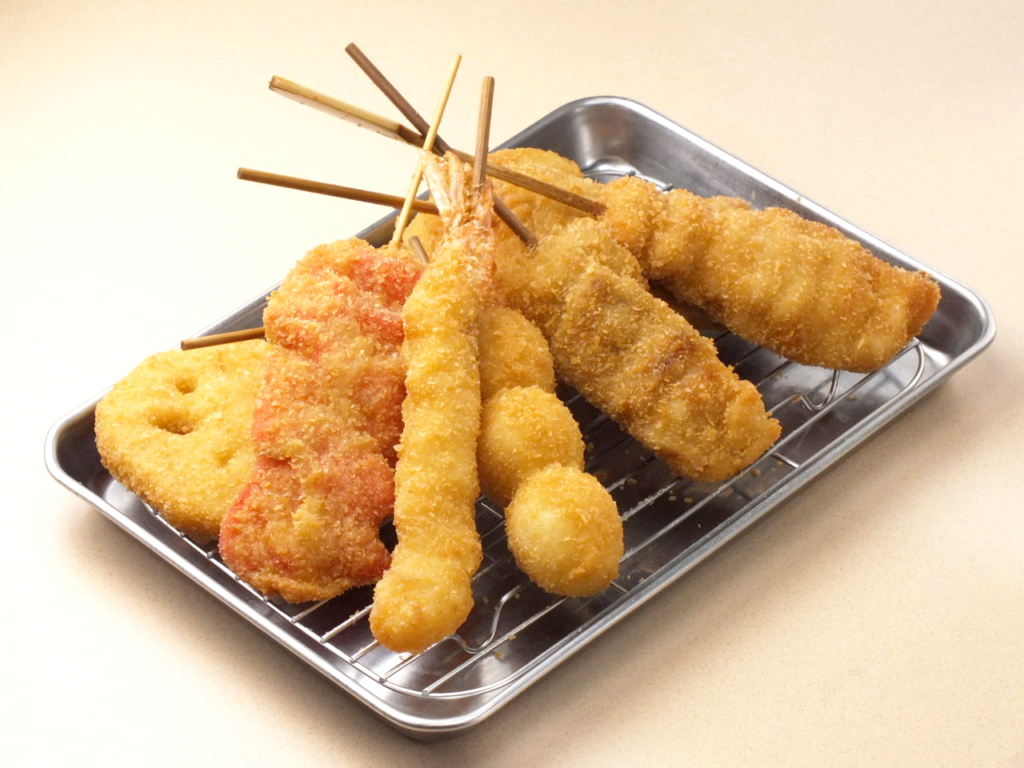
In Osaka, kushiage and kushikatsu are the same. Individual ingredients are skewered, battered, and deep fried. It is most popular as a street food, or eaten along with beer/drinks at an izakaya/bar.
Tokyo / Kanto area
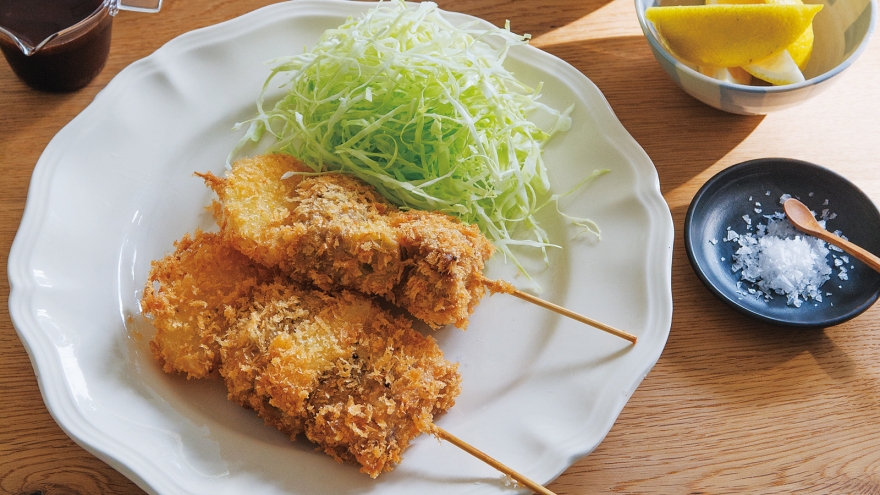
In Tokyo or Kanto prefecture (Eastern Japan), kushiage and kusikatsu can refer to different style dishes.
Kushiage typically refers to the classic Osaka-style dish (above).
Kushikatsu may refer to a a dish where sliced cubed pork and onions are skewered together, battered, then deep fried. It is served on a plate with shredded cabbage, similar to tonkatsu.
Nagoya / Chukyo area
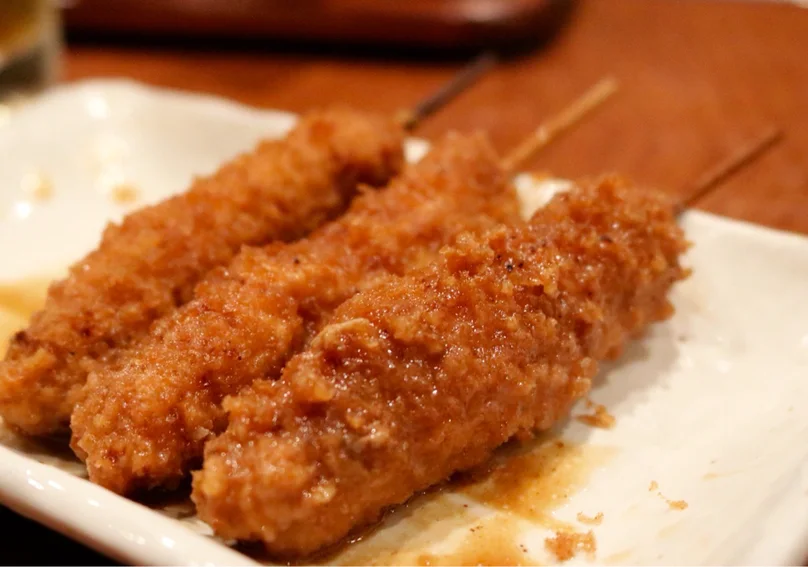
In Nagoya or Chukyo area of Japan, the main difference is the sauce that is used, and the way it is served.
Nagoya is famous for its miso, hence the sauce used for Nagoya style kushikatsu is miso-based. Sometimes, the entire skewer is dipped in the sauce before being served to you.
This is different from the typical Worcestershire-based sauce that is typically used.
How do you eat kushiage? (Don’t double dip)
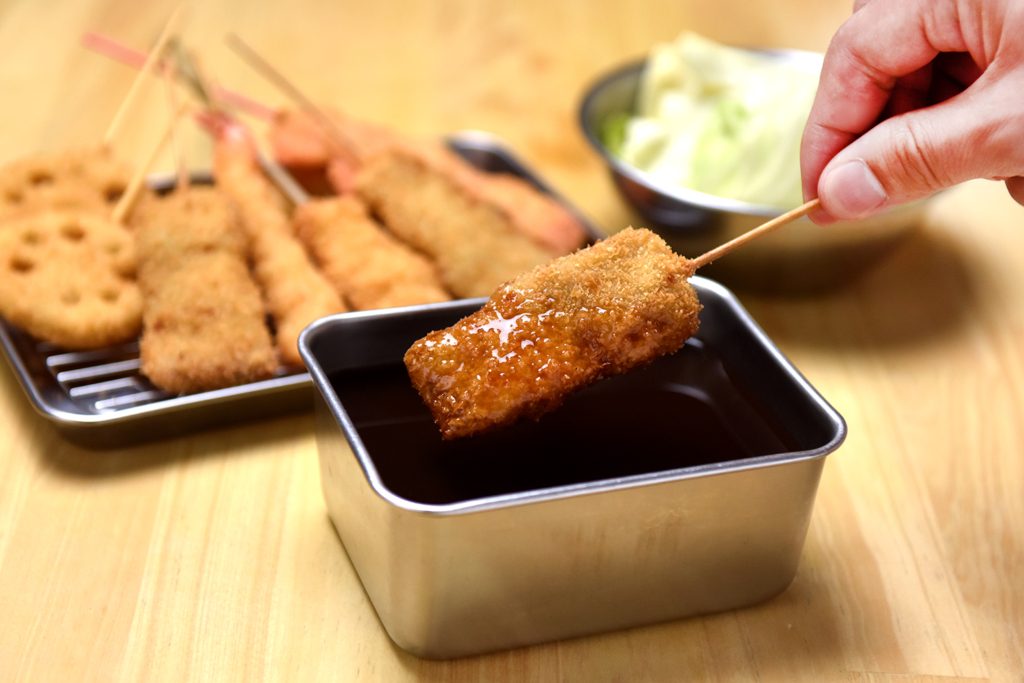
For classic Osaka-style kushiage / kushikatsu, the most important thing is to not double dip the sauce!
Many restaurants leave a sauce container on the table or counter for all the customers to use.
To eat your kushikatsu, simply dip your skewer into the sauce, and eat it. After you take your first bite though, don’t dip it again!
It is super unhygienic, and will cause a big problem for the restaurant staff.
Another method is to use the provided cabbage to scoop the sauce onto your kushikatsu.
There is actually an official term used by kushikatsu restaurants for “no double-dipping”: It’s called “ni-do-zu-ke-kin-shi” (二度漬け禁止). By law, if you disobey the rule, the restaurant can kick you out!
Many restaurants now provide individual sauce to each customer to avoid this problem.
A Brief History of Kushikatsu
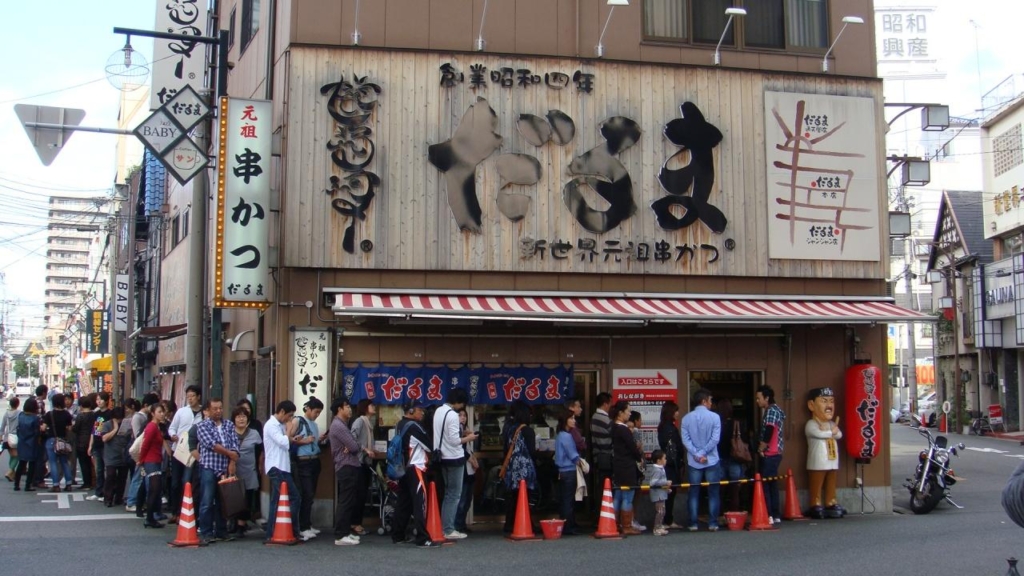
Kushikatsu originated in 1929 from the Shinsekai neighbourhood of Osaka at a restaurant called “Takobishi” (たこ菱).
The owner (Yoshie Hyakuno) created it as a way for less wealthy people to eat beef. It quickly became popular with the many labourers in the area. Originally there were only two types of kushikatsu — beef or potatoes. There are now over 40 types to choose from.
The original shop was destroyed during WWII, but rebuilt and reopened in 1945 under the new name “Daruma” (だるま).
The Kushikatsu Daruma brand still lives on today, with 16 locations in Japan (15 in Osaka, one in Tokyo).
If you’re in the area, make sure you try it!
Types of Kushikatsu
Originally, kushikatsu was made with just beef or potatoes. You can now find kushikatsu made with an unlimited number of ingredients.
Here are the 5 most popular types, according to the official Japan Kushikatsu Association
1. Beef 牛
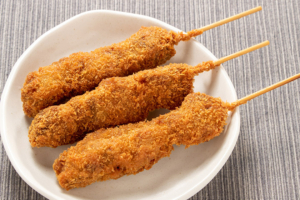
2. Pork 豚
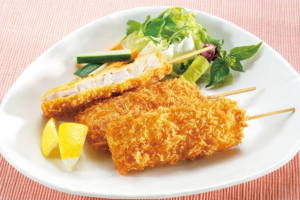
3. Beni Shoga 紅しょうが (i.e. Red Pickled Ginger)
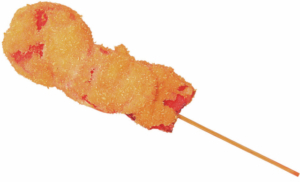
4. Prawn 海老
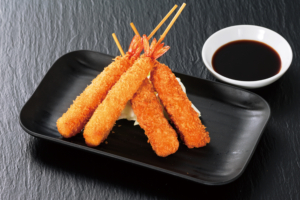
5. Quail Egg うずら卵
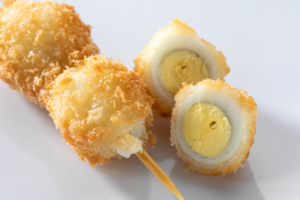
Some other popular meats used for kushikatsu include chicken, sausage, meatball, chicken gizzard, and even horse meat.
Popular types of seafood include mackerel, eel, squid, octopus, scallop, and shisamo.
For vegetarians, there is a ton of choice. You can find mushrooms, bamboo shoots, okra, tomatoes, lotus root, broccoli, pumpkin, asparagus, and more.
There is really an unlimited variety of kushikatsu, which is part of its appeal. You can even find some more creative ingredients like cheese, gyoza, or mochi.
What is Kushikatsu Sauce?

The sauce used for dipping kushikatsu differs greatly by shop.
The original sauce is mainly a mixture of Worcestershire sauce, soy sauce, and vinegar.
In Nagoya, a miso-based sauce is typically used.
If you are in Japan, you can also buy bottled kushikatsu sauce at the supermarket or online (e.g. Amazon).
If you want to make your own, check out the recipe below:
How to Make Kushikatsu?
The process of making kushikatsu is quite straightforward:
Cut up the ingredients, skewer them on bamboo skewers, coat the skewer in batter / breadcrumbs, and deep fry it.
Here are some good recipes to follow:
- Just One Cookbook Kushikatsu Recipe
- Chopstick Chronicles Kushikatsu Recipe
- Negima (Tuna + Green Onion) Kushikatsu by NHK World
Below is a simple recipe I put together via Kurashiru and Rakuten Recipes (sauce):
Simple Kushikatsu Recipe
Course: Street food, sides, mainCuisine: Japanese4
servings30
minutes10
minutesRecipe adapted from Kurashiru. Sauce recipe from Rakuten.
Ingredients
- Sauce Ingredients
Worcestershire sauce … 150ml
Soy sauce … 2 teaspoons
Ketchup … 1 tablespoon
Sugar … 2-3 tablespoon
Oyster sauce … 1 teaspoon
Water … 150~200ml
- Main Ingredients
Flour … 2 tablespoons
Egg … 1 beaten eggSalt … a little
Beef, or other ingredients of your choice
Panko bread crumbs … Appropriate amount
Frying oil … Appropriate amount
Directions
- Make the sauce: Mix all ingredients together and boil lightly
- Cut the beef (or other ingredients of your choice) and skewer them
- Coat lightly in flour, then egg, then panko bread crumbs
- Fry in 180°C oil for 3-5 minutes, until cooked through and golden brown.
Recipe Video
Notes
- If you don’t want to use egg, mix water (60g), flour (50g), and a bit of salt together to create a simple batter
Other Kushiage / Kushikatsu FAQ
What is kushiage in English?
There is no English word for kushiage. The most direct translation is something like “deep-fried skewered meat and vegetables”.
What is the difference between tempura and kushiage?
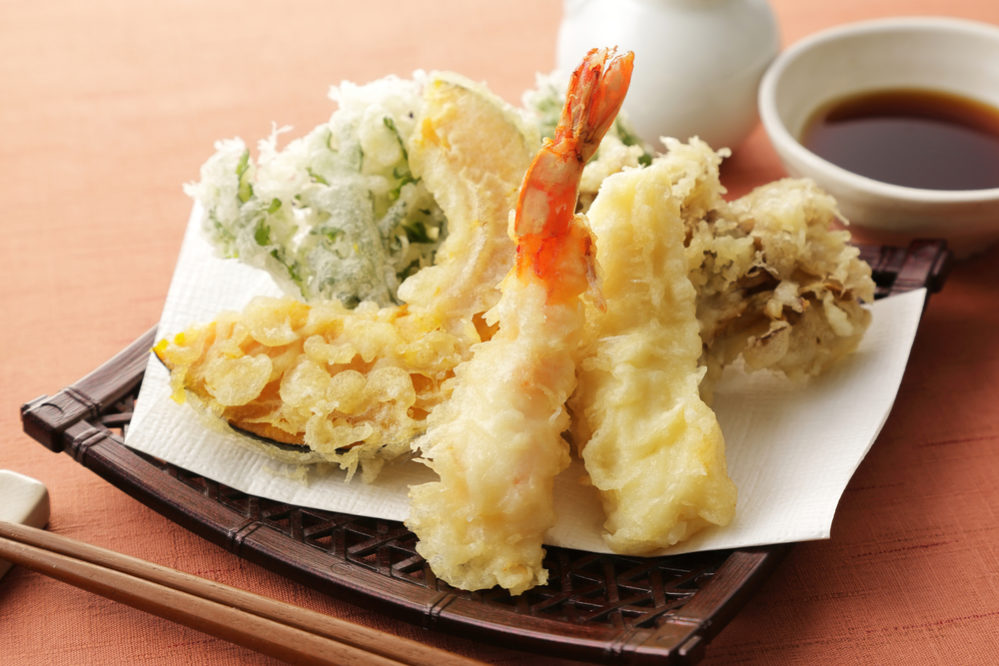
Tempura (天ぷら) is another popular type of deep fried dish. It is also made with a variety of vegetables, meats or seafood.
The main differences between tempura and kushiage is that tempura is not skewered, and the batter/coating is a bit different.
Kushikatsu is coated with panko (i.e. breadcrumbs) after being battered. Tempura does not use breadcrumbs at all. It is simply battered in a mixture of egg, flour, and cold water, then fried. Tempura batter feels a bit lighter compared kushikatsu.
Tempura is more famous overseas. It is also typically viewed as a mid to high class restaurant food, while kushikatsu is typically seen as a cheaper street food.
What is the difference between kushiage and yakitori?
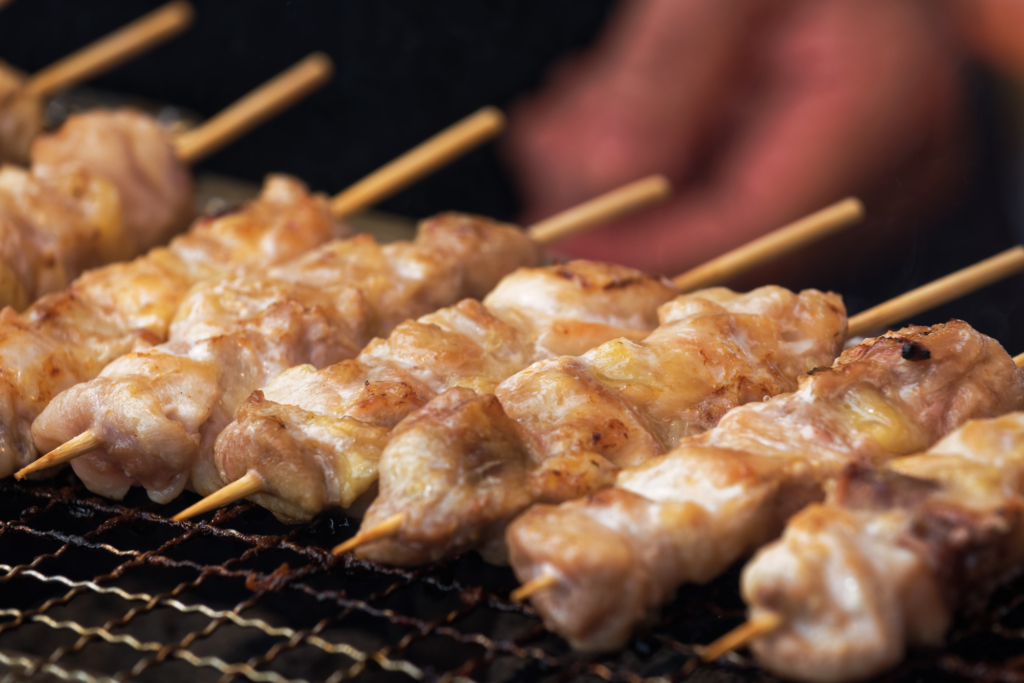
Yakitori(焼き鳥)refers to skewered chicken meat that is typically grilled over an open flame.
The main differences between yakitori and kushiage / kushikatsu are:
- Yakitori is not battered or deep fried
- Yakitori only refers to chicken skewers
What other food is Osaka known for?
Osaka is best known for Takoyaki and Okonomiyaki.
Kushikatsu is probably the 3rd best known food from Osaka.
Is kushikatsu vegan?
Kushikatsu can be vegan if you only use vegetables. You also need to make sure the batter does not use egg, and that the frying oil is simply canola or vegetable oil.
Summary
Kushiage / kushikatsu is delicious deep fried skewers of meat, vegetables and/or seafood. It is extremely popular in Osaka, and can be found throughout the country. There is even an official “Japan Kushikatsu Association” whose goal is to grow/promote kushikatsu in Japan and around the world.
Have you ever tried kushikatsu?
What is your favorite type?
Let me know in the comments below:
Subscribe for free today! Receive cool recipes, my latest Japanese knife picks and learn about Japanese culture. Delivered every other week to your inbox.
